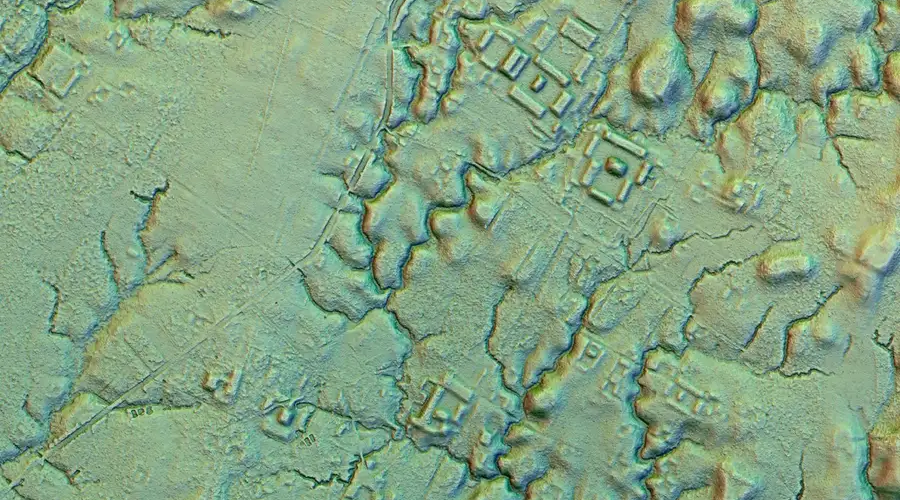Our understanding of ancient populations in the Amazon is changing. New research has discovered cities built at least 2500 years ago, hidden in what today belongs to the Ecuadorian jungle.
The previously unknown civilization was found by a group of international scientists in the Upano region, according to the study published in the journal Science. It is estimated that this population existed until about 1,000 years ago.
“It’s incredible,” said Stéphen Rostain, who directs investigations at France’s National Center for Scientific Research and led the research. “It was a lost valley of cities.”
A change of perspective on the Amazonian rainforest
Previously, it was thought that these indigenous populations lived in small settlements, with nomadic inhabitants dedicated to hunting and gathering food — and the area was mostly considered to be inhospitable.
Rostain was discouraged early on in his career by his peers; many scientists did not believe that the existence of ancient groups in the Amazon was possible. “But I’m very stubborn, so I did it anyway. Now I must admit I am quite happy to have made such a big discovery,” he said.
Research in the area has revealed that the ancient city system was designed with houses and outdoor spaces, interconnected by a network of canals and roads.
“It changes the way we see Amazonian cultures,” said co-author, Antoine Dorison, from the same research center. “Most people picture small groups, probably naked, living in huts and clearing land — this shows ancient people lived in complicated urban societies.”
Un nuevo estudio internacional confirma que la selva amazónica albergó antiguamente ciudades. Se trata de una red de ciudades jardín a lo largo del río Upano en #Ecuador, que se remonta al año 500 a.C. Es la red urbana más grande y antigua de la Amazonia. pic.twitter.com/8xTr0FfdbW
— Federico Kukso (@fedkukso) January 12, 2024
Excavations and technologies
Archaeologists began ground excavations in the Upano Valley nearly 30 years ago. Radiocarbon dating revealed an occupation between 500 BCE and 300-600 CE, coinciding with the time of the Roman Empire.
Despite the structures found, archaeologists did not have a complete picture of the region. But when Ecuador’s National Institute of Cultural Heritage funded a LIDAR survey of the valley in 2015, the findings increased.
LIDAR, which stands for Light Detection and Ranging, is a method of laser remote sensing. Equipped aircraft beamed laser pulses into the forest, an area of 300 square kilometers, which made it possible to observe topographic features impossible to see under the dense trees, such as the remains of the city.
The lost cities of the Amazon
The research was able to visualize more than 6,000 mounds and earthen platforms, which formed the foundations of the houses. In these pre-Hispanic urban centers in the Upano Valley, the research revealed squares and streets with specific patterns, which were linked to agricultural terraces and extensive drainage.
Archaeologists identified five large settlements and ten smaller ones. On hillside terraces and agricultural fields, inhabitants cultivated sweet potato, cassava and corn. Meanwhile, the urban centers were densely populated, with ceremonial and residential structures, where an estimated 10,000 people resided. There were perhaps 15,000 to 30,000 inhabitants at their peak, which is comparable to the population of London in the Roman period.
The rectangular platforms are 20 meters by 10 meters, between 2 and 3 meters high. Most are estimated to have been used for homes around a square with a central platform grouped with three or six units. Meanwhile, in Kilamope, a platform measuring 140 meters by 40 meters was found, which is estimated to have had ceremonial purposes.
At several sites in Ecuador’s Upano Valley, such as this one, called Kunguints, laser scans revealed the remains of buildings arranged around low squares and distributed along widely dug streets. https://t.co/GwVVj6qgzp
— Science News (@ScienceNews) January 15, 2024
Complex populations in the Amazon
This reveals that the Amazon was home to ancient complex civilizations, prior to what was previously known, including the Llanos de Mojos, an ancient urban system recently discovered in Bolivia.
“This is older than any other site we know in the Amazon,” Rostain said. “We have a Eurocentric view of civilization, but this shows we have to change our idea about what is culture and civilization.”
Compared to the Mojos Plains, the Upano Valley cities are a millennium older, were denser and had a more connected extensive road network extending for tens of kilometers and suggest that the cities existed at the same time, creating a region-wide network.
“The road network is very sophisticated,” Dorison said. “It extends over a vast distance, everything is connected. And there are right angles, which is very impressive.”
‘El Dorado’ of science
The destruction of this society may have been caused by a nearby volcano, which would have created rich soils for the population to prosper in their time. However, researchers are just beginning to understand how these communities functioned.
Although researchers do not know the exact numbers of this population, the central area of Kilamope is comparable to the main avenue of Teotihuacan in Mexico and the Giza plateau in Egypt, and similar to Mayan urban systems. Archaeologists believe that these discoveries are only the tip of the iceberg.
The characteristics of this network of lost cities make it a scientific ‘El Dorado’ according to Rostain, surpassing all expectations.
Image: Lidar scans of the Upano valley in Ecuador showing raised platforms by Stephen Rostain

